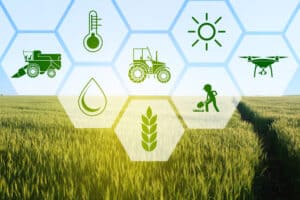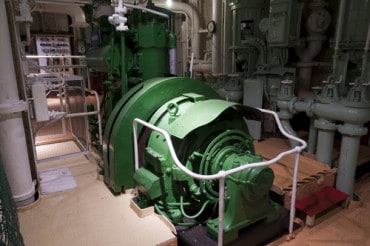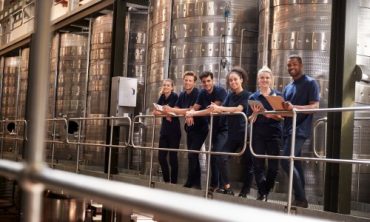
Advanced technology helps farmers work more efficiently, saving time and money, and ultimately can help them address modern challenges ranging from changing weather patterns to how fast the world’s population grows.
While money may not grow on trees, practically everything else is grown from seeds—from the food you eat to other common items in your day-to-day life, such as cleaners, adhesives, pet shampoo, crayons, and even your toilet seat. Almost everything you touch stems from materials grown on a farm.
With the population expected to hit nearly 10 billion by 2050, farmers will have to double their outputs to keep up with the demand and sustain our world. From machine learning (ML) to the Internet of Things (IoT), computer vision (CV), and GPS technology, farmers must adopt emerging technologies to keep pace with an ever-growing world, skilled labor shortages, and increasingly unpredictable weather patterns.
Boosting Savings and Efficiency on the Farm Using IoT, ML, and CV
When an agricultural machine like a tractor, sprayer or combine drives through a field, it collects millions of data points along the way. Some of them, like sensor measurements, help the machine determine where it is and where it needs to go. Other data, such as production yields, tell a farmer how much they’re getting out of different parts of their field. Without IoT technology, this information gathering wouldn’t be possible at the speed at which it happens today. IoT technology helps process and analyze a ton of information in a short period of time, so farmers don’t have to worry about manually figuring out what it means. They spend less time deciphering the data and more time taking action based on what the data is telling them.
Using ML and CV can also lead to savings and more sustainable farming, especially as it relates to herbicide use. Farmers leverage robotic sprayers to distribute herbicides to nurture crops; however, in some cases, herbicides may be applied to an entire field. By covering everything instead of using a more direct application, farmers waste herbicide and place it on other areas – like plants and soil – where it’s not needed. Enter ML and CV: this technology helps the sprayer “see” the difference between plants and weeds using deep learning and ML models, which enable it to evaluate its surroundings and spray just the weeds. Specifically targeting weeds enables crops to thrive, increasing overall output and saving farmers time, labor, and money. Additionally, with less herbicide hitting unwanted areas of the land, farmers are increasing the sustainability of their operations, helping to keep our planet healthier for future generations.
See also: Automation Helps Farmers Improve Sustainability
Measure Twice, Drive Once: Using GPS to Map Fields and Enable Precise Location
If you’ve ever tried driving without GPS or a smartphone mapping application, you understand how much slower and confusing it can be to navigate an area. Similarly, tractors need GPS technology combined with pre-determined maps made by the farmer to understand the parameters of a field and know where to drive and not to drive. The farmer sets the pre-determined route, and then leverages GPS technology to automatically guide the machine, knowing where it is at all times and what path to follow. Though the farmer maps the route, without the GPS, the machine wouldn’t understand where it is.
The need to pinpoint accurate locations can’t be understated. Farmers work on huge parcels of land under extremely time-sensitive and variable conditions. To put this into perspective, farmers’ optimal planting window averages just ten days, so variables such as a stretch of rainy days could delay planting and lead to a 1% reduction per day in yield. No mistake is small in farming, and it’s extremely costly to have a machine run over the same piece of land twice.
A study conducted by the Department of Agricultural and Consumer Economics at the University of Illinois at Urbana-Champaign found that the average net benefit (or contribution to profit) was perceived to be almost $90 per acre when using precision agriculture technologies. It’s not uncommon for a farm to be in the 5,000-acre range, roughly the size of 4,000 football fields, where the average net benefits amount to $360,000. That’s why using precise GPS technology is crucial for the future of farming.
See also: The Path Towards Efficient, Profitable, and Safe Autonomous Agriculture
Saving Farmers Time with Autonomous Tractors
Automated driving and GPS technology has existed in the field for decades, and that technology is now opening the door for a new era: autonomy.
Full autonomy means a farmer no longer needs to sit in the cab of their machine and can instead focus their attention on other parts of the business and their personal life. Without being tied to the cab of the machine, farmers can spend more time with friends and family, improving their overall quality of life without harming their business. Tillage, during which some farmers prepare the land before planting, is a great use case for autonomy, given its repetitive nature. Since this task requires little human input and is often done when the farm is busy with other activities such as harvesting, where ripe crops are gathered from the field, it’s a natural starting point for making this technology a reality on the farm.
This technology requires precise perception so the machine is fully aware of its surroundings and can make in-the-moment decisions. Let’s say a fully autonomous tractor is running and is interrupted by a foreign object, such as a tree branch that fell in the field during a storm. The machine alerts the farmer, who then decides whether the tractor should go around the object or if the farmer should remove the object themselves so the machine can move forward.
By letting autonomy handle repetitive processes like these, farmers can focus on more value-added tasks for their business, boosting efficiency and ultimately giving them more time to spend with loved ones or on hobbies, increasing their quality of life.
Farming Technology: A Modern Solution for a Modern World
Though farmers can’t control how fast the population grows or changing weather patterns, there are many variables related to farming they can control where technology proves to be helpful. With advanced technology, farmers can work more efficiently, saving time and money, and ultimately minimizing risks by controlling what they can on the farm. Modern challenges require modern solutions, and technology is helping address these issues on a global scale.




























